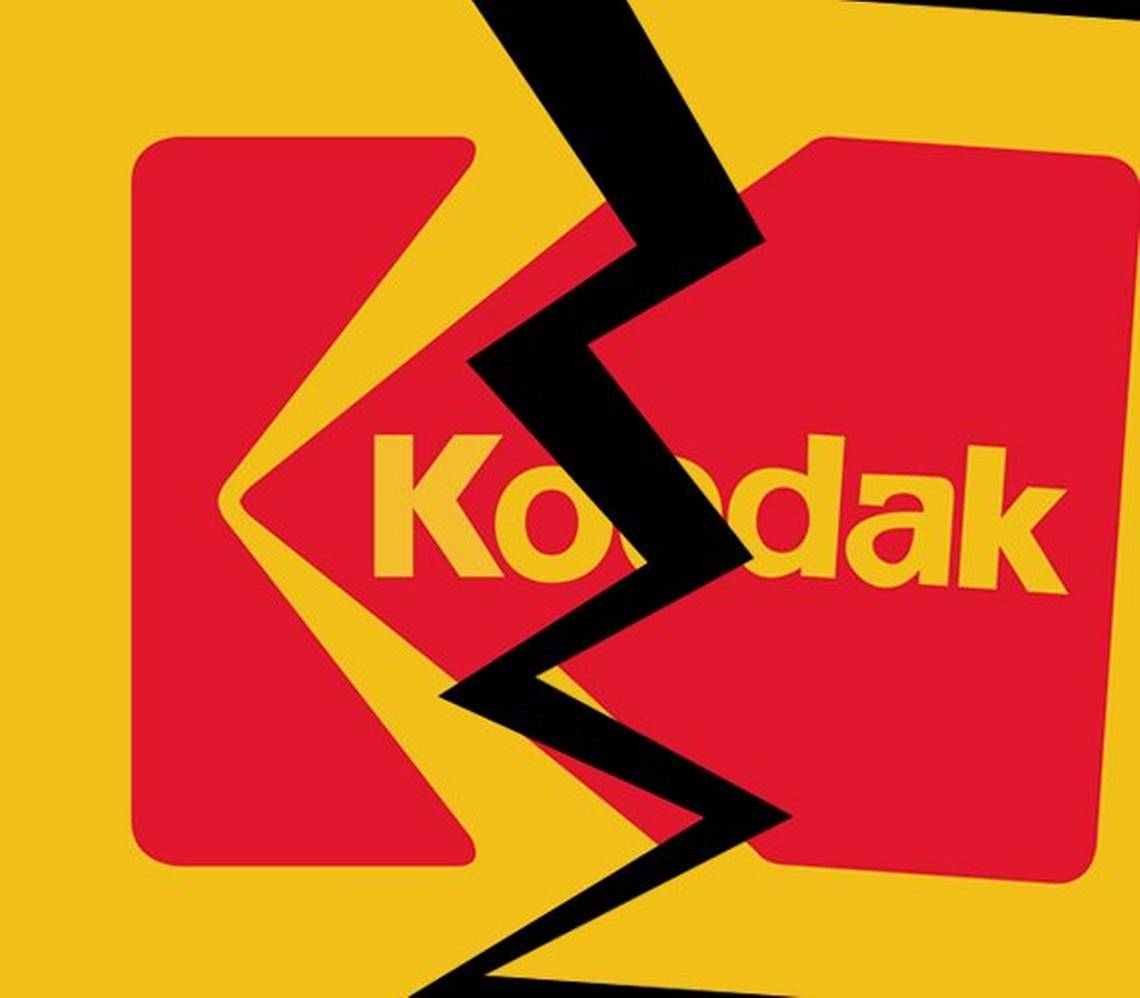How to Avoid a Kodak Moment for your Company

Kodak Cameras History
Kodak developed the first simple, consumer camera. For over a century following this, Eastman Kodak was the biggest player in the industry. However, the years following 1994 saw the company’s demise, thanks to its unwillingness to acknowledge the growing popularity of digital cameras. Apple had just launched QuickTake, the world’s first consumer digital camera, which incidentally was manufactured by Kodak. Despite this, they did not jump onto the digital bandwagon till many years later. As digital photography destroyed its film-based counterpart, it was a downhill ride from there, and the company eventually filed for bankruptcy in 2011. Its annual losses reached $1.38 billion in 2012. Of the roughly 200 buildings that once stood on the 1,300-acre campus of Eastman Kodak’s business park in Rochester, 80 have been demolished and 59 others sold off.
So a Kodak Moment is an industry leader, getting disrupted and losing it all out, in its own game.
Ironically, Kodak was also the first to develop digital cameras in 1975. Clearly, it seized to capitalize on the digital camera opportunity.
So what went wrong? How did the biggest player in the market become an industry nobody?
The answer lies in the fact that the biggest companies are almost always the slowest to catch up with disruptive inventions. The problem with most big players in an industry is that they struggle to acknowledge the slow threat of disruptions, more and more driven by start-ups these days.
Getting Disrupted
The industrial cycles for growth and best of business models have become shorter and shorter. This threat does not reveal itself clearly, as disruptive new companies are often not significant in the market initially. They grow steadily with time to overcome big players as they mature. Generally, the technology, data, enterprise nature, users community, etc. that they may build in the early phase, makes it harder for larger companies to catch up even when they fully commit to it.
For example, Google tried catching up with Facebook but failed. Microsoft tries catching up with most firms like Google in search engine, Amazon in cloud services, Salesforce in CRM, Oracle in databases but never succeeds, in spite of having had the most resources any firm had in the last few decades.
Coupled with a myopic vision of future and arrogance of their current large market position, big players are too set in the comfort of certain old routines. Thinking that they are what led to success and made the company profitable in the first place, it is the old operations, design etc that start hindering its progress in the evolving industry. Also, the management, who is meant to have the vision of the future, is not highly incentivised to make dramatic changes necessarily. The CEO’s tend to focus on quarterly results to keep shareholders happy. The CEOs and Management often do not have significant enough stake in the company, but decent base packages, hence caring less for the Company. As revenue declines, managers cut expenses and erroneously focus even more on core activities, which are getting disrupted. Top execs cling to legacy businesses, which end up becoming anchors, holding them down against the winds of change. This leads to what we are calling the ‘Kodak Moment’– when an industry leader goes out of business because of its refusal to engage in innovation and is eventually overtaken by other industry players.
There is also an issue of lack of ownership or enough stake in the company for anybody to care. For example, in startups or family businesses, the management owns majority stakes in the company. So there is a higher sense of ownership and responsibility to see that the investment pays off and the company is successful.
Whereas in larger corporates today, the ownership levels are diluted and managements are hired guns to run the company if they can, otherwise they go and get another job.
In the image above, we are trying to demonstrate how most big companies equity ownership works through various channels of investors. The institutional investors, get money from various individuals or corporates, to invest in companies and hire the management and Board to run the company. This results in a huge dilution of ownership. The CEOs and top management of the company are not motivated enough to keep the company profitable as their stock ownership may be lower than 1%. They keep doing their jobs as long as they keep getting paid their “high” fixed salaries.
Even after a new business model is validated, existing market leaders may believe that it is not important enough to be adopted as the industry norm yet. What stops them is their reluctance to bear the pain of initial costs, efforts and risks required to implement the changes necessary. However, change is painfully evident.
Lets look at other companies who had the “Kodak moment” of Failure
Blockbuster & Netflix
Blockbuster was an American video retail chain, that provided home movies, DVD by mail, video rentals and video games.
However, because of the company’s unwillingness to join the digital bandwagon, it was overtaken by Netflix, which ironically also started as a DVD-by-mail service in 1998, and but began streaming in 2007.
On April 6, 2011, satellite TV provider Dish Network bought the company Blockbuster LLC and its remaining 1,700 stores.
Borders Bookstore & Kindle
Established in 1971, Borders Books & Music was the largest books and CDs retailer in the US, employing as many as 19,500 employees at its peak.
Then came the Amazon Kindle, changing the reading habits of millions of users all over the world.
Nokia & Apple
Apple introduced the 1st generation smart-phones in 2007, and changed the mobile world forever. Nokia saw the demand for touch screen as a “fad”, and continued to make feature based flip-phones. This and their failure to make Apps and the decision to keep using outdated technology and not adopting smartphone technology were other reasons that it failed. Samsung made a smart call few years ago on smartphones loaded with a camera, access to the Internet, media player, games, social media applications, and other features, and eventually overtook Nokia.
Google+ & Facebook
Years after dismissing Facebook, Google finally woke up to the threat social media community power. In June 2011, it launched a rival to Facebook called Google Plus. It was bit too little, bit too late. It failed to switch to mobile friendly version and lost out to Facebook’s existing large users community, and quick to load and easy to use mobile version.
Microsoft Bing & Google
By far the most used search engine in the world, Google has been around since 1997 and is constantly improving with new smart results, advanced features, and integration with other Google products. Microsoft (richest software company for decades) competitor product Bing could not catch up. Bing was launched with a lot of fanfare, but failed to compete with Google’s vast directory, superior features like Adwords, Google Analytics and Map Search, applications like Google finance, Google Ad Sense, Ad Mob, Google Doc, Drive, etc. and user-friendly interface.
Let’s look at some of the biggest developments to come and disrupt several industries.
1. Automobile Industry
Tesla Motors
Before Tesla motors came along, electric cars were mainly for R&D, and unaffordable for mass markets. Elon Musk @ Tesla made fast, sleek, smart, affordable, and long running electric cars by pure perseverance and defying all odds against its success.
Another great innovation is the Autopilot feature, which allows Tesla cars to steer within a lane, change lanes with the simple tap of a turn signal, and manage speed by using active, traffic-aware cruise control. Digital control of motors, brakes, and steering helps avoid collisions from the front and sides and prevents the car from wandering off the road. Autopilot also enables your car to scan for a parking space and parallel park on command. And the new Summon feature lets you “call” your car from your phone so it can come greet you at the front door in the morning.
All the car companies will face challenging times ahead unless they catch up or participate in the newer ways of automobile sector development.
– Google co-founder Larry Page is looking towards the skies with flying cars:
– Another path-breaking invention from Google X, self-driving cars that will be on the roads soon.
2. E-commerce
– Amazon promises to reinvent shopping using delivery drones.
Humans can speak 150 and type 40 words per minute on an average. With speech recognition accuracy going up to 99%, Amazon owned voice-controlled Bluetooth speaker ‘Echo’ features a voice platform powered by Alexa which acts as a personal assistant, allowing you to order items by simply saying the order out loud. The future may even see you pay your bills using the Echo. In the coming decades, artificial intelligence, natural language processing, and machine learning are going to change the world in ways we can hardly imagine.
3. Manufacturing
3-D printing is all set to change the face of manufacturing. All the large manufacturing businesses have a big reason to worry.
It’s likely that the most surprising disruptive innovations will come from bottom-of-the-pyramid entrepreneurs, who are inventing new ways of delivering services like education and healthcare for a fraction of the cost of current market leaders.
What can big players do to avoid the “Kodak Moment”?
1. Invest into R&D
All firms must try to spend 5-20% in RnD. R&D is the window to future opportunities. And ensure that they try to incorporate relevant outcomes RnD into their business, or partner with other firms who may benefit from it.
Did you know the first operating system was developed by Xerox RnD, given away to Apple for almost free, and that Microsoft copied it to make windows which became the most successful operating system ever?
Who thought that the invention of a camera mobile phone would put the camera industry out of business? Thing are becoming obsolete by the second.
2. Encourage entrepreneurial spirit in the team
To have an entrepreneurial spirit, you need people who think anything is possible and have the tenacity to accomplish it. Nurture ideas, as a leader become a soft board for people to bounce their ideas on. Encourage out of the box thinking, ideas are the currency of success. Ernst & Young, for instance, has “The Innovation Challenge,” which is an internal competition where employees come up with new service offerings for their clients. PwC runs the “PwC PowerPitch”, which is an innovation contest where the winning team receives the sum of $100,000 to implement their idea. Amazon Web Services has the “Start-Up Challenge,” which is a competition for start-ups that use its Web, e-commerce and cloud-computing technology to build their infrastructures and businesses
3. Invest into younger disruptive companies
Focusing on a large number of growing yet undiscovered companies increases the odds of uncovering hidden value. Small companies are often in growing industries and find it easier to change their strategy in response to market conditions. They are often run by their founders or a small group of managers who are more motivated to increase shareholder value
4. Embrace failures. But do not fail to try
“I have not failed. I’ve just found 10000 ways that won’t work.” -Thomas Edison
You must try to stay out of your comfort zone as often as possible, to try better ways of doing things.
Organizations need new and better ways to go beyond lessons that are superficial (“Procedures weren’t followed”) or self-serving (“The market just wasn’t ready for our great new product”). That means discarding old cultural beliefs and stereotypical notions of success and embracing failure’s lessons. Take out the lesson and learn positively from failure, you’re just one step closer to getting things right.
In this process, you may need to unlearn what you know, and pivot
It can help you become open to new skills, experiences, behaviors, and knowledge. Unlearn what is no longer useful, and relearn a better way to do it.
5. Younger, Dynamic Leadership
Fresh talent and young leaders are crucial to being successful in the ever-evolving climate of an industry. Vishal Sikka, the first non-founder CEO brought in to put Infosys back on track after the company struggled to grow for years back. Christopher Bailey revamped Burberry at a time when the company was losing face and customers thanks to the influx of cheap Chinese replicas.







